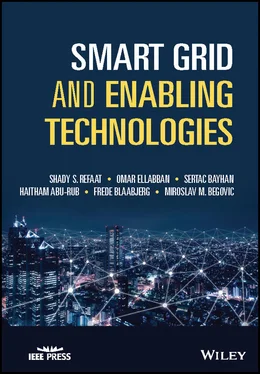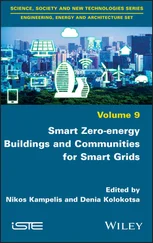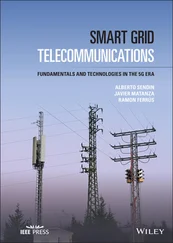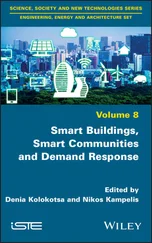Frede Blaabjerg - Smart Grid and Enabling Technologies
Здесь есть возможность читать онлайн «Frede Blaabjerg - Smart Grid and Enabling Technologies» — ознакомительный отрывок электронной книги совершенно бесплатно, а после прочтения отрывка купить полную версию. В некоторых случаях можно слушать аудио, скачать через торрент в формате fb2 и присутствует краткое содержание. Жанр: unrecognised, на английском языке. Описание произведения, (предисловие) а так же отзывы посетителей доступны на портале библиотеки ЛибКат.
- Название:Smart Grid and Enabling Technologies
- Автор:
- Жанр:
- Год:неизвестен
- ISBN:нет данных
- Рейтинг книги:3 / 5. Голосов: 1
-
Избранное:Добавить в избранное
- Отзывы:
-
Ваша оценка:
- 60
- 1
- 2
- 3
- 4
- 5
Smart Grid and Enabling Technologies: краткое содержание, описание и аннотация
Предлагаем к чтению аннотацию, описание, краткое содержание или предисловие (зависит от того, что написал сам автор книги «Smart Grid and Enabling Technologies»). Если вы не нашли необходимую информацию о книге — напишите в комментариях, мы постараемся отыскать её.
Smart Grid and Enabling Technologies
Smart Grid and Enabling Technologies
Smart Grid and Enabling Technologies — читать онлайн ознакомительный отрывок
Ниже представлен текст книги, разбитый по страницам. Система сохранения места последней прочитанной страницы, позволяет с удобством читать онлайн бесплатно книгу «Smart Grid and Enabling Technologies», без необходимости каждый раз заново искать на чём Вы остановились. Поставьте закладку, и сможете в любой момент перейти на страницу, на которой закончили чтение.
Интервал:
Закладка:
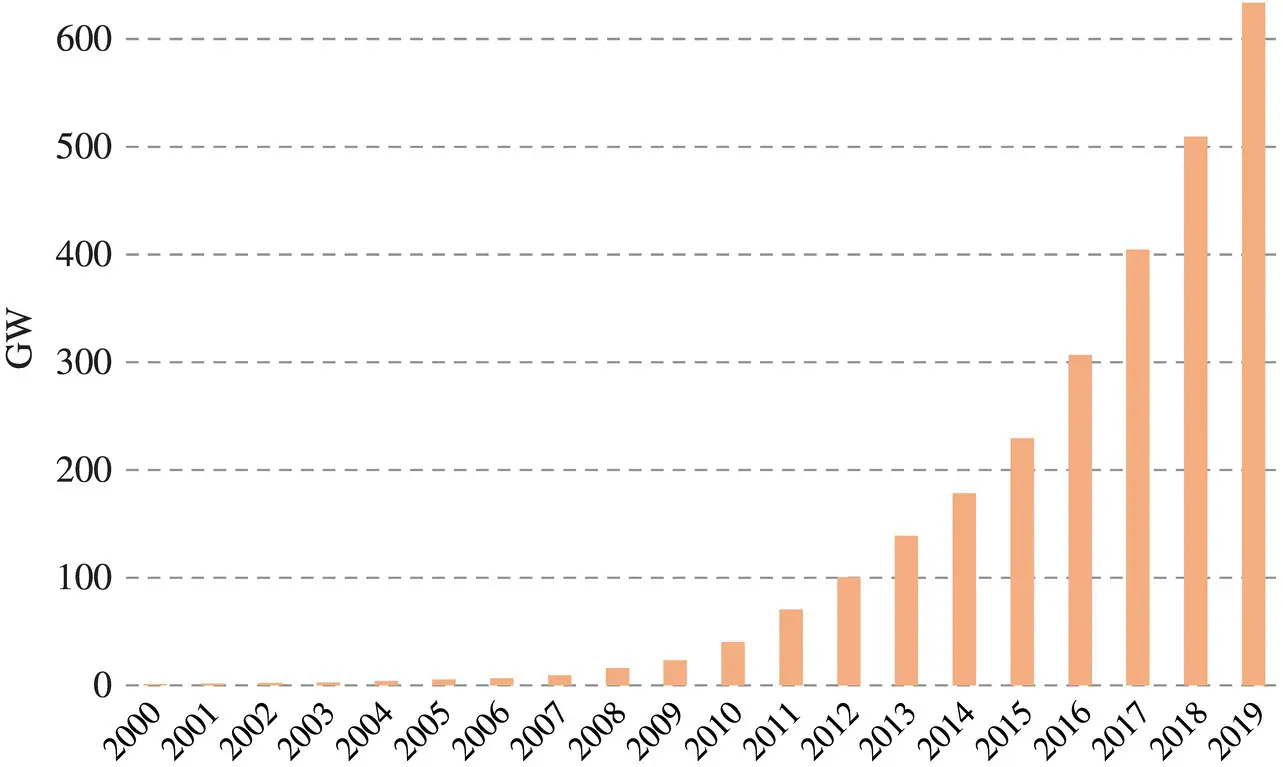
Figure 2.13 Global integrated solar PV capacity from 2000 to 2019.
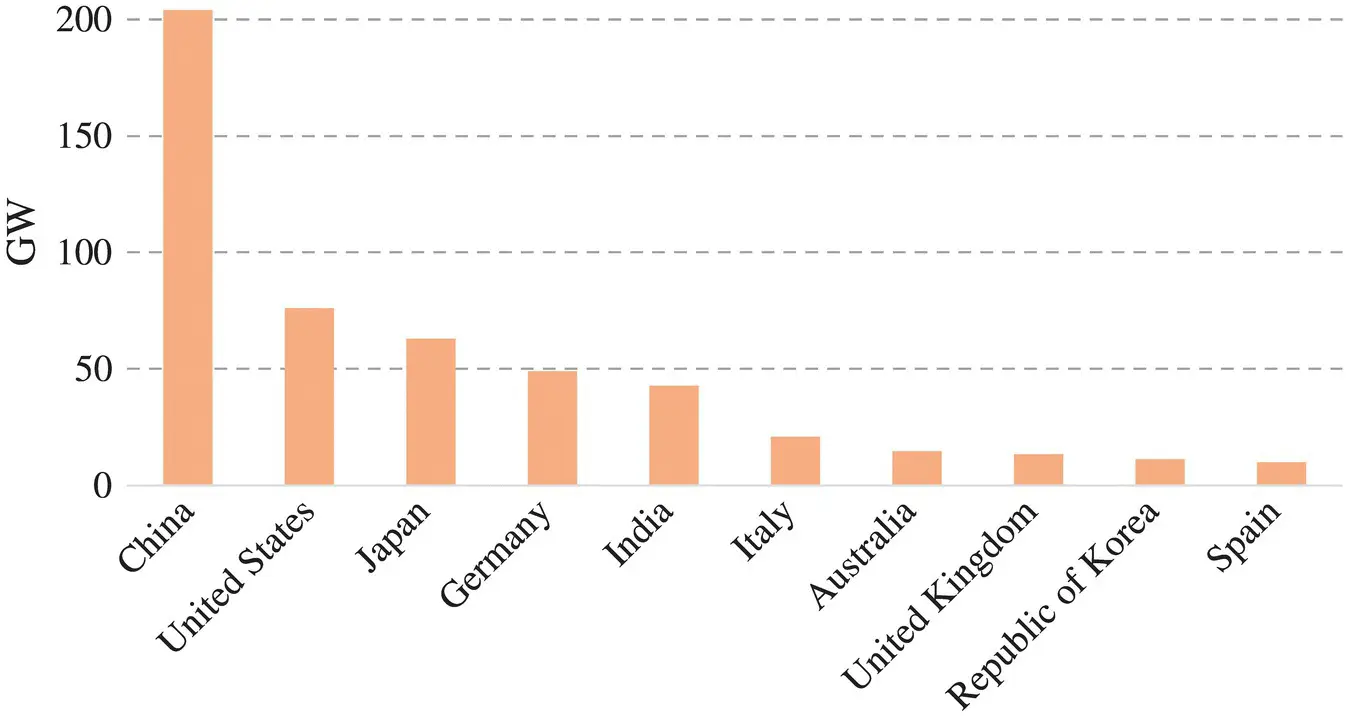
Figure 2.14 Solar PV global capacity by top 10 countries in 2019.
2.2.5.2 Concentrated Solar Power
Concentrated Solar Power (CSP) is a power generation technology that uses mirrors or lenses to direct sunlight onto a receiver, which gathers and transmits the solar energy to a heat transfer fluid that could be utilized to supply heat for end‐use applications or to heat a fluid and generate steam. The steam turns the turbine and produces energy just like traditional power plants. Huge CSP plants could possess a heat storage system to produce electrical power even in the presence of clouds or at sunset. This allows for the generation of dispatchable electricity, which could facilitate grid integration and economic competitiveness. Furthermore, CSP technology can easily be integrated into fossil fuel‐based power plants that utilize traditional steam turbines to generate electrical power, whereby the part of the steam generated by the combustion of fossil fuels is replaced by heat from the CSP plant. While CSP plants generated mainly electrical power, they also generate high‐temperature heat that could be utilized for industrial processes, space heating (and cooling), and heat‐based water desalination processes. Moreover, CSP plants could be utilized to generate steam to inject into mature and dense oil fields for thermal enhanced oil recovery, [46].
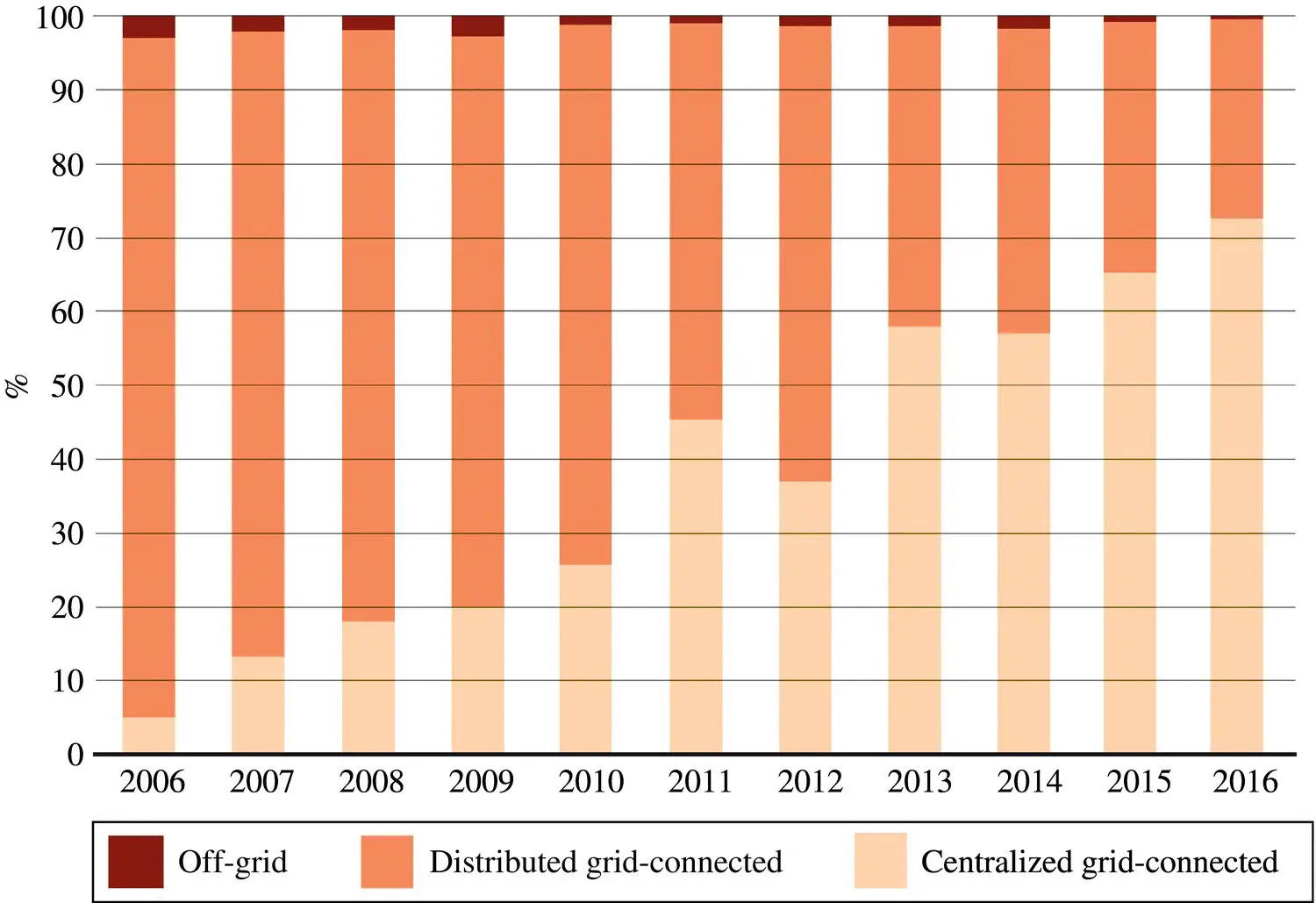
Figure 2.15 PV shares of grid‐connected (distributed and centralized) and off‐grid installations, 2006–2016.
CSP merely utilizes the direct component (DNI) of sunlight to operate and hence, are an interesting opportunity for implementation in regions with high DNI (i.e. Sun Belt regions like North Africa, the Middle East, the southwestern United States and southern Europe), which is an advantage that solar PV does not possess. CSP applications can be implemented from small distributed systems of tens of kW to large centralized power stations of hundreds of MW. The CSP plant could be constructed in 1–3 years (depending on its size) and could function for over 30 years. Five to six months of full‐power utilization are required to reimburse for the energy used for the construction. The CSP technology includes four parts and they are as follows; Parabolic Trough (PT), Fresnel Reflector (FR), Solar Tower (ST) and Solar Dish (SD). In PT and FR plants, mirrors lead the sun's rays on a focal line; the concentration factors range from 60 to 80 with a temperature culminating up to 550 °C. In ST and SD plants, mirrors lead the sun rays on a single focal point with higher concentration factors ranging from 600 to 1000 and temperatures ranging from 800 to 1000 °C, [47, 48].
The commercial implementation of CSP plants began in 1984 in the United States with the Solar Energy Generating Systems (SEGS) project. The last SEGS plant (a 354 MW in California) was finished in 1990. From 1991 to 2005, no CSP plants were constructed globally. Globally installed CSP capacity has risen to almost tenfold since 2004 and increased at an average of 50% per year between 2009 and 2010 and 2013–2014. In 2013, global installed capacity rose by 36% to greater than 3.4 GW and a 310 MW of capacity became active in 2019, increasing globally capacity to a value greater than 6.2 GW, as illustrated in Figure 2.16. Spain and the United States remain the global leaders, yet the number of regions with employed CSP are rising. CSP activity experienced a substantial shift from Spain and the United States to developing regions in 2015, and this trend remained in 2016. There is a significant trend toward developing regions with a high solar radiation, South Africa led the market in new additions in 2016, becoming the second developing country to do so after Morocco in 2015. Figure 2.17shows the CSP capacity in the top 10 countries in 2019 [12].
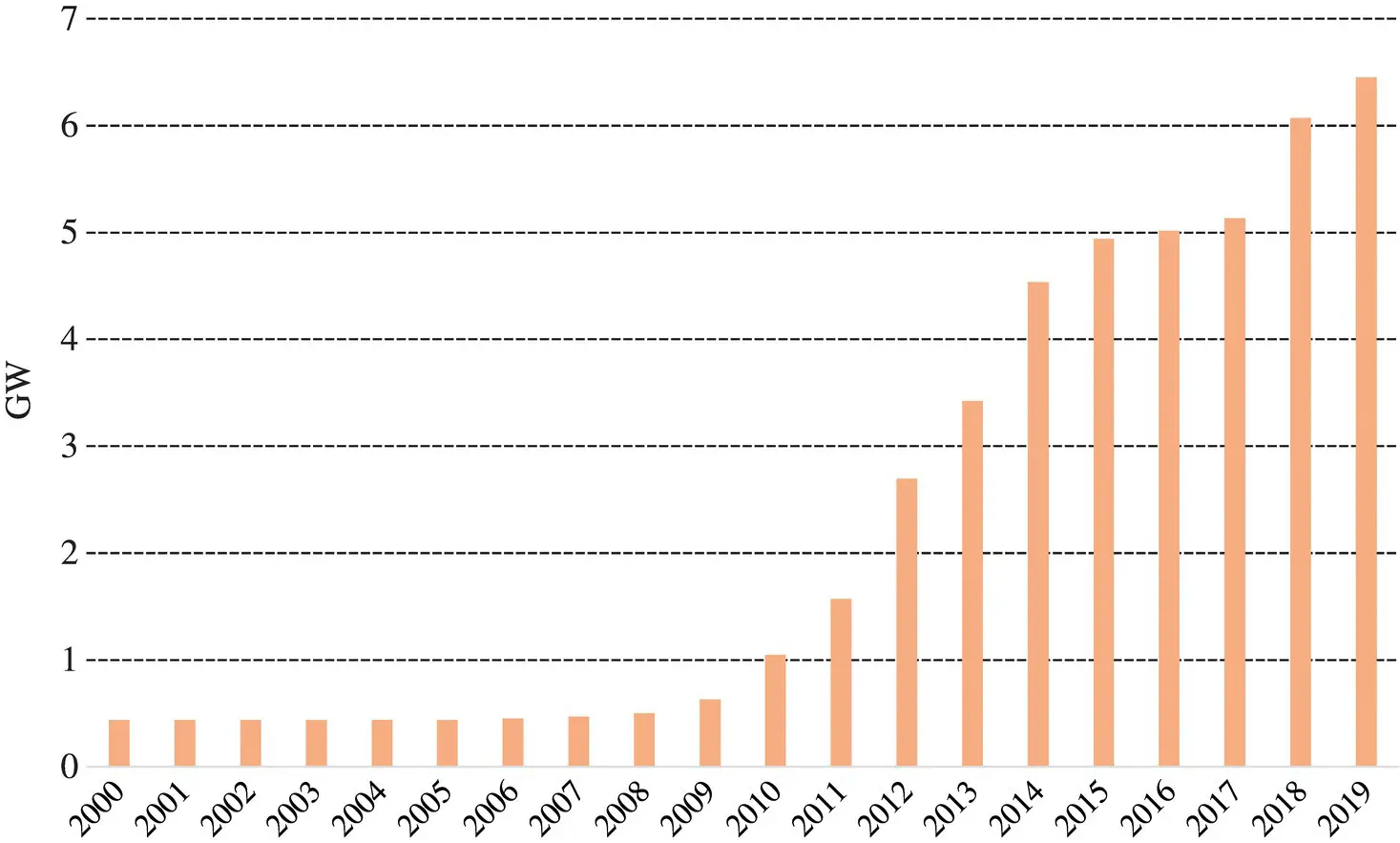
Figure 2.16 Global installed concentrating solar power capacity, 2000–2019.
Even although CSP costs experienced a substantial decrease, CSP employment has been hindered due to fast and significant declines in the cost of solar PV. In numerous countries, research and industry are working to enhance CSP performance and decrease its costs by focusing on: cost reductions in important CSP components (collectors for instance); other applications of CSP; efficiency of the heat transfer process and increasing the value of CPS by implementing thermal energy storage (TES) systems, which allows CSP facilities to deliver dispatchable power [49].
2.2.5.3 Solar Thermal Heating and Cooling
STS transforms sun‐oriented radiation into heat. These frameworks are utilized to raise the temperature of a heat transfer fluid, which can be used to generate energy. The hot liquid can be utilized straightforwardly for hot water requirements or space heating/cooling needs, or a heat exchanger can be utilized to exchange the heat to the ultimate application. The heat produced can, moreover, be put away in a legitimate storage tank for utilization within the hours when the sun is not accessible. The sun powered collector is the key component of an STS.
There are two prevailing plans: flat‐plate solar collectors (FPC) and evacuated tube solar collectors (ETC). Both level and emptied tube advances are progressed and each type of innovation includes a wide run of choices. In nations and locales with tall cooling requests, a sun‐based heat cooler is a vital innovation. Cost competition and government subsidy, particularly for recently built lodging, are the key drivers. In expansion to comparatively tall forthright costs, there were impediments such as: (i) disappointment to supply adequate administrative instruments to ensure viable working; (ii) hesitance of private shoppers to move from conventional viable warming and cooling frameworks, and (iii) disappointment of the designers and building and vitality businesses to realize the capabilities of STS systems [50].
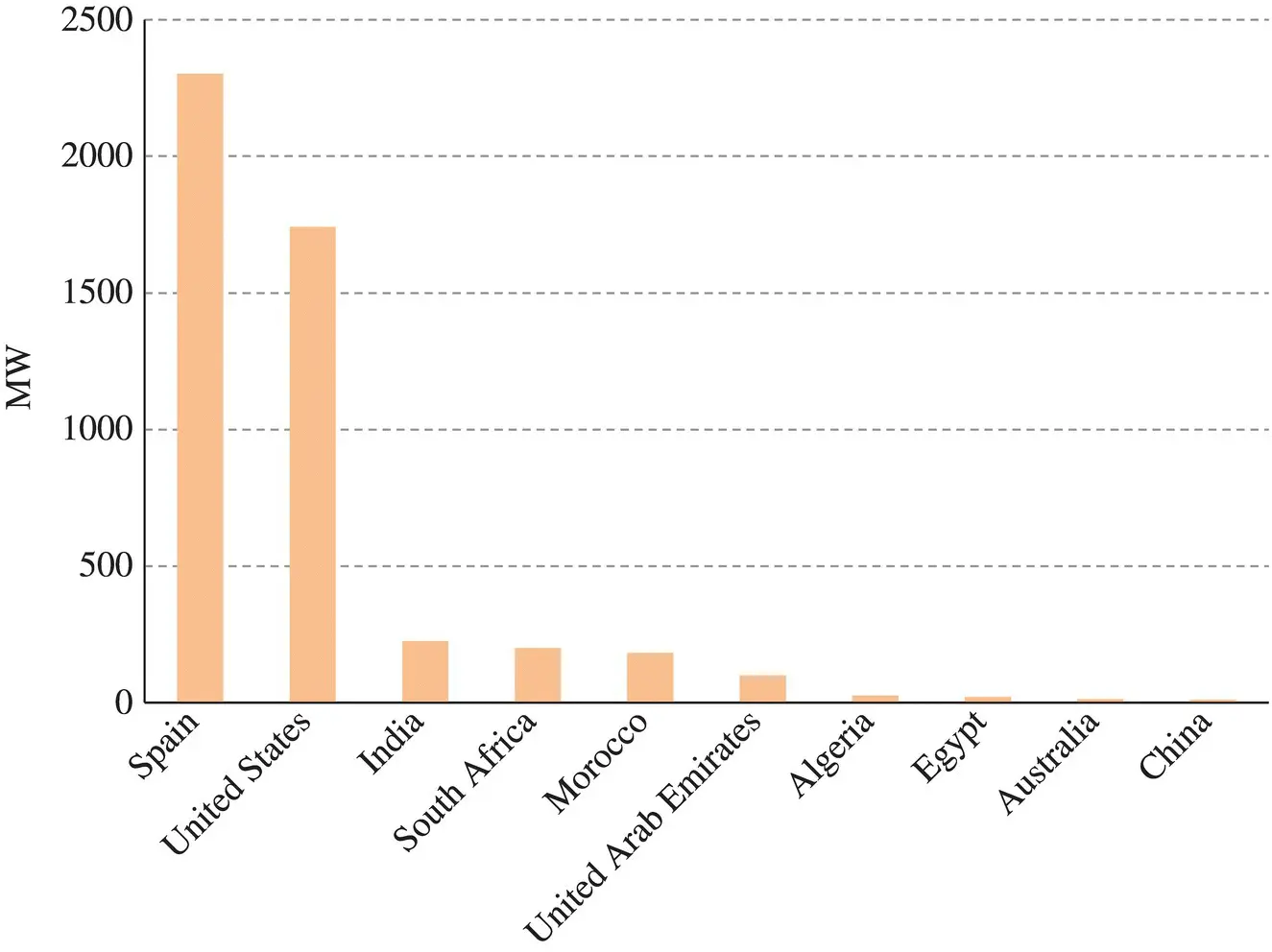
Figure 2.17 Concentrating solar power capacity in the top 10 countries in 2016.
The installed STS in 127 nations with a worldwide capacity of 456 GWth is promoted by 2016 as seen in Figure 2.18. China (71%), United States (4%), Turkey (3%), Germany (3%), Brazil, India, Australia, Austria, Israel, and Greece were the best 10 nations for full‐speed operations, as shown in Figure 2.19.
2.2.6 Wind Energy
Wind power is known to be the transformation of wind energy by wind turbines into a practical form of energy, like utilizing wind turbines to generate electrical energy, wind mills for mechanical power, wind pumps for pumping water or drainage, or sails to drive ships. The first wind turbines for electrical energy production were made at the beginning of the twentieth century. The technology has improved substantially since the early 1970s. By the end of the 1990s, wind energy was well‐known as the most crucial sustainable energy resources [51].
Читать дальшеИнтервал:
Закладка:
Похожие книги на «Smart Grid and Enabling Technologies»
Представляем Вашему вниманию похожие книги на «Smart Grid and Enabling Technologies» списком для выбора. Мы отобрали схожую по названию и смыслу литературу в надежде предоставить читателям больше вариантов отыскать новые, интересные, ещё непрочитанные произведения.
Обсуждение, отзывы о книге «Smart Grid and Enabling Technologies» и просто собственные мнения читателей. Оставьте ваши комментарии, напишите, что Вы думаете о произведении, его смысле или главных героях. Укажите что конкретно понравилось, а что нет, и почему Вы так считаете.
